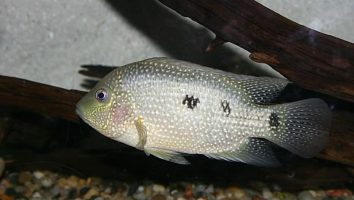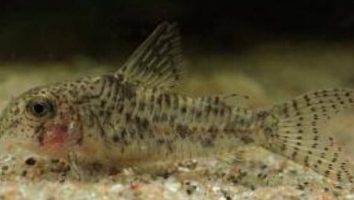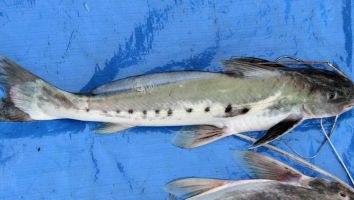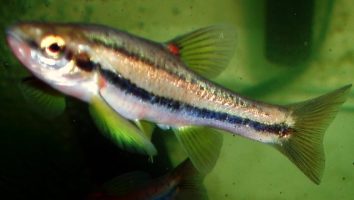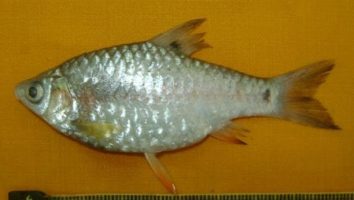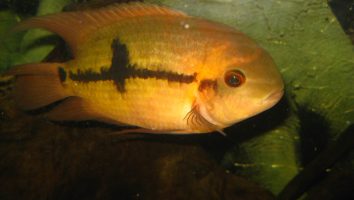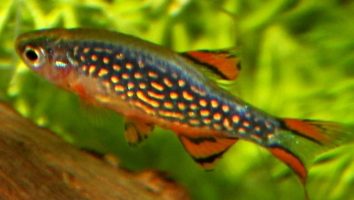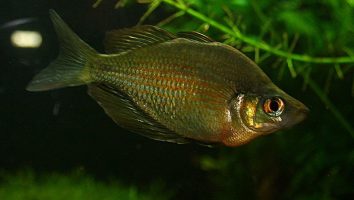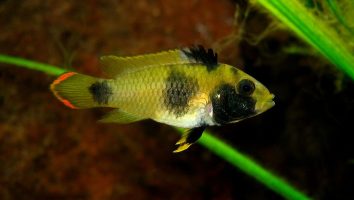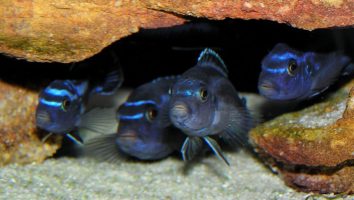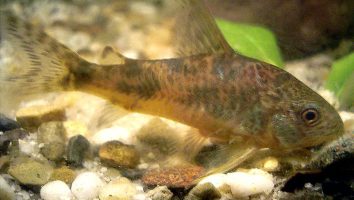The Orange chromide is a beautiful and peaceful freshwater fish that is perfect for beginners. They’re easy to care for and very rewarding to watch grow.
This guide will teach you everything you need to know about Orange chromide care. You’ll learn about their diet, size, lifespan, and more!
Table of contents
Species overview
Orange chromides (Etroplus maculatus) are a type of cichlid that’s native to India and Sri Lanka. They prefer brackish water but can also be found in freshwater and marine environments.
Their natural habitat is quite diverse, which is reflected in their ability to adapt to different types of water conditions. They can be found in everything from rivers and streams to estuaries and mangrove forests.
Orange chromides are omnivores, which means they will eat both plants and animals. In the wild, their diet consists of things like small crustaceans, insects, and larvae.
These fish are very popular in the aquarium trade due to their beautiful orange coloration. They are also relatively easy to care for, which makes them a good choice for beginner aquarists.
Appearance
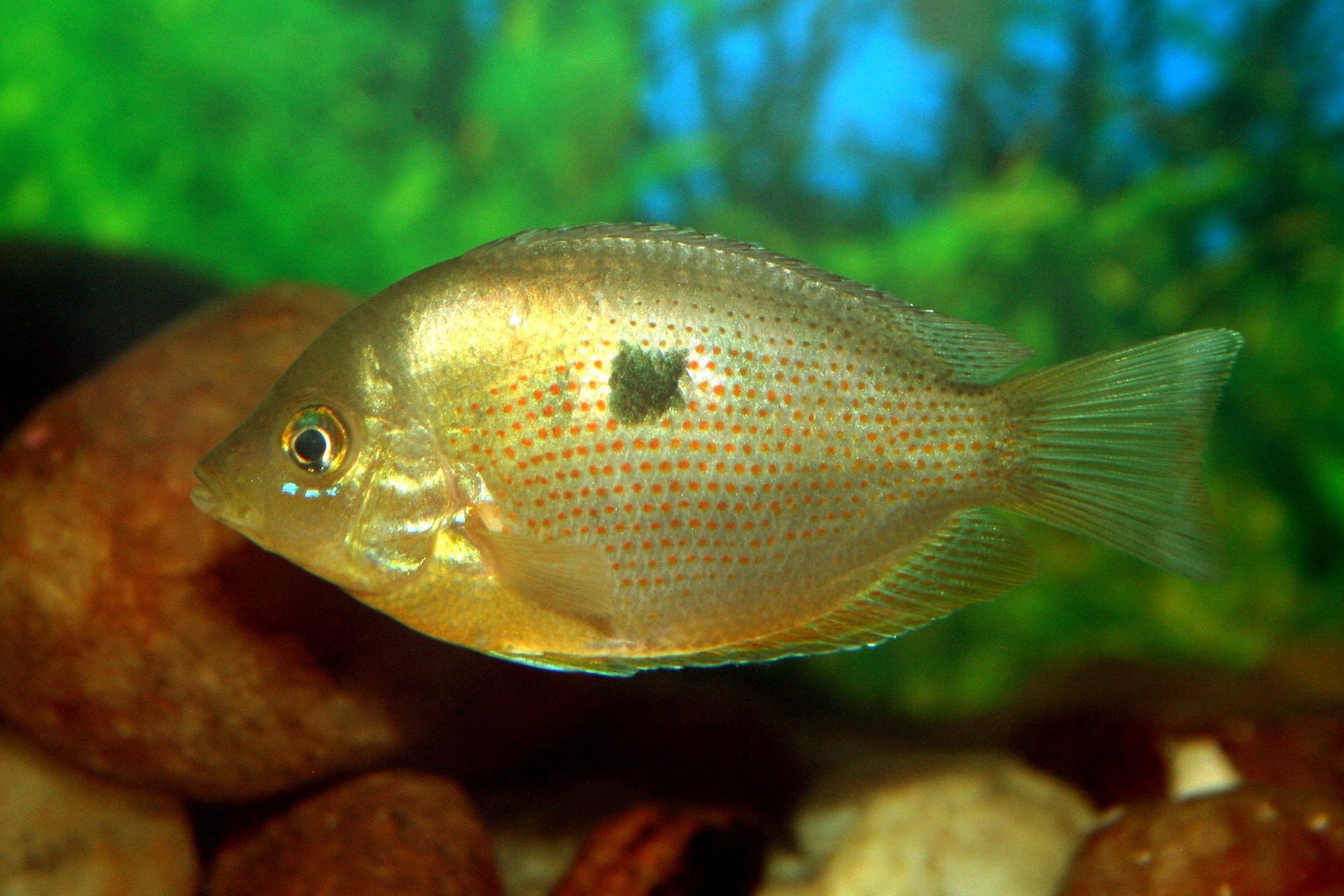
The orange chromide is a beautiful freshwater fish that is easily recognizable thanks to its vibrant coloration.
As the name suggests, these fish are mostly orange. The hue can vary slightly from fish to fish, but it’s always going to be close to orange. The orange coloration starts at the nose and goes all the way back to the caudal peduncle.
You’ll find that the shade of orange gets a bit lighter as it goes up the body of the fish. The orange color is broken up by a few vertical black stripes.
These fish have a very long and thin body shape that’s similar to a torpedo. This gives them a lot of speed and maneuverability in the water.
Their dorsal fin is tall and thin, and it starts about two-thirds of the way back on their body. The dorsal fin is orange like the rest of the fish, but it has a black stripe running down the center.
The anal fin is also tall and thin, and it’s located just behind the dorsal fin. The pectoral fins are fairly small and located just behind the gill covers.
The caudal fin is forked and symmetrical. The orange chromide has a pair of thin barbels on their lower jaw that they use to help find food.
Lifespan
Orange chromides have a lifespan of around 5 to 8 years in captivity. As with most fish, their lifespan can be impacted by a number of factors.
The level of care they receive is obviously one of the biggest. If they’re in a well-maintained tank with good water quality, they’ll obviously live longer than if they’re in a subpar environment.
Diet is another big factor. These fish are omnivores, so they need a diet that includes both plant and animal matter. If they don’t get enough of either, it can shorten their lifespan.
Size
Orange chromides can grow to be about 6 inches in length, with males being larger than females on average.
Tank
Tank Size
Orange chromides need at least a 55-gallon tank to be comfortable. If you want to keep more than one fish, you should add at least another 40 gallons for each fish.
These fish are active and social so they do best when kept in groups. A larger tank will give you the opportunity to keep a larger group of fish which will make your fish happier and less likely to become stressed.
Water Parameters
The orange chromide is a freshwater fish that is native to Sri Lanka. It is a peaceful fish that does well in a community tank.
The orange chromide prefers a water temperature of 72-78 degrees Fahrenheit, a pH of 6.5-7.5, and a water hardness of 5-12 dGH.
What To Put In Their Tank
As with any fish, it is important to provide them with a comfortable and safe environment. This includes the decorations and substrate in their tank.
For the substrate, we recommend using a finer gravel. This will help to protect their delicate barbels and keep them from getting snagged on anything.
As for the decorations, it is best to keep them to a minimum. These fish like to have plenty of open swimming space and don’t do well with a lot of clutter in their tank.
We recommend using some driftwood and rocks to help provide hiding places and break up the line of sight in the tank. This will give them a sense of security and make them feel more comfortable.
You can also add some plants to the tank if you wish. Just be sure to use species that can withstand the high water temperatures that these fish prefer.
Common Diseases
The orange chromide is a hardy fish that doesn’t often get sick. However, there are still a few diseases that you need to be aware of.
The most common illness that these fish experience is ich. This is a parasitic disease that will cause white spots to form on the body of your fish.
If left untreated, ich can be fatal. However, it is fairly easy to treat if you catch it early.
Another disease to look out for is fin rot. This is an infection that will cause the fins of your fish to rot and fall off. It is usually caused by poor water quality.
Fin rot is fairly easy to treat, but it can be fatal if left untreated.
The best way to prevent these diseases is to maintain good water quality in the tank. A clean and stable environment will go a long way in keeping your fish healthy and disease-free.
Behavior & Temperament
The orange chromide is a very peaceful fish that does best in a community tank. They are not an aggressive fish, and they will not bother other tank mates. The only time they may become aggressive is if they are defending their territory.
These fish are very active and love to swim. They are constantly moving around the tank and exploring their surroundings. They are also known to be very good jumpers, so it is important to have a tight-fitting lid on your tank.
Orange chromides are social creatures and do best in groups. They are known to form schools in the wild, so it is best to keep them in groups of at least 5 in your tank.
These fish are not picky eaters and will eat just about anything you give them. They are known to be particularly fond of live and frozen foods.
Tank Mates
Orange chromides are peaceful fish that do well in community tanks. They’re not overly active and prefer to stay close to the bottom of the tank.
Because they’re not too demanding, there are plenty of potential tank mates to choose from.
Here are a few compatible species that do well with orange chromides:
- Guppies
- Platies
- Mollies
- Swordtails
- Neon Tetras
- Cherry Barbs
- White Cloud Mountain Minnows
- Danio rerio
- Kuhli Loach
Breeding
Orange chromides are another egg-laying species that is easy to breed in captivity. These fish don’t need much in the way of a specialized breeding setup. In fact, they will often spawn in community tanks!
To increase the chances of spawning, you can make some small changes to the tank. First, raise the water temperature to around 82 degrees Fahrenheit. Then, add some live plants and provide hiding places.
When ready, add two females for every male. The males will be the larger of the two and have longer fins.
Feed the fish plenty of high-quality foods. Then, begin changing about 50 percent of the water. That should trigger spawning.
You’ll know you’re successful when you see the female deposit eggs on the plants or decorations. After she does that, the male will guard them diligently.
In about ten days, the eggs will hatch. You can move the babies into a nursery tank to improve their odds of survival. Feed them mashed peas and other green vegetables until they’re ready to join the adults in your main tank.
Conclusion
The orange chromide is a beautiful and unique fish that is perfect for the community tank. They are peaceful and get along well with other fish, making them a great addition to any tank.
They are also easy to care for, which is always a bonus. Overall, we think the orange chromide is a great fish for both beginners and experienced aquarists alike.

